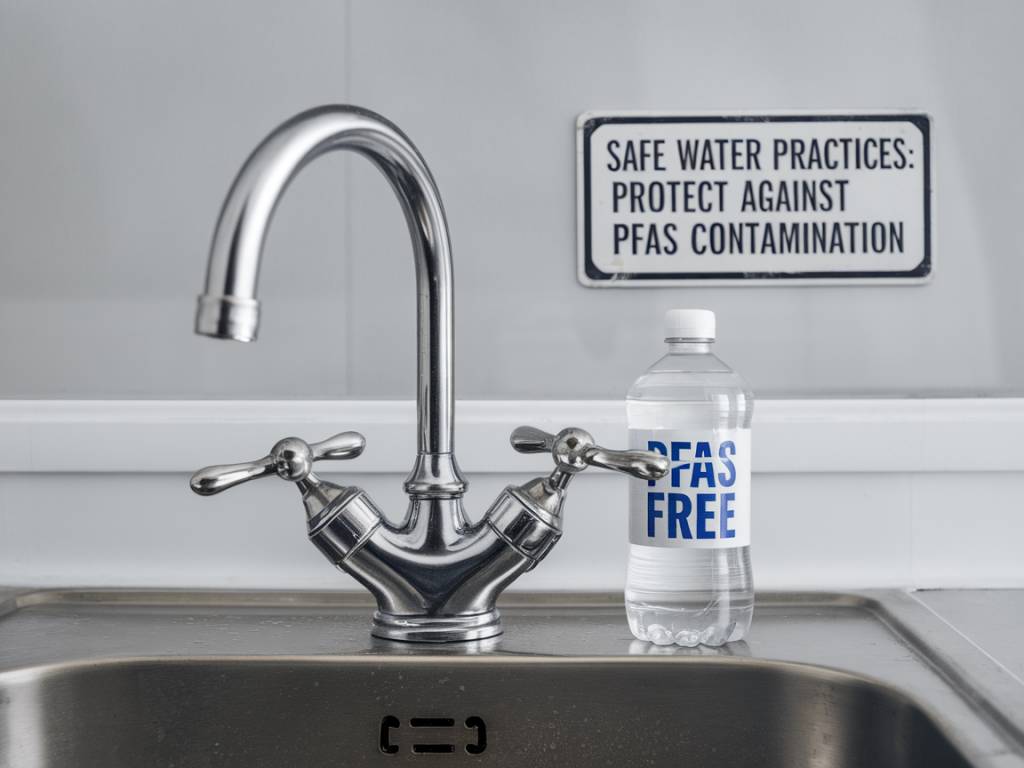In today’s world, ensuring safe drinking water is more crucial than ever, especially with the rising concerns around PFAS contamination. These « forever chemicals, » often found in everyday products like non-stick cookware and stain repellents, can seep into our water systems and pose significant health risks. But fear not; there are effective measures you can take to protect yourself and your loved ones. So, let’s dive in and explore these safe water practices together!
Understanding PFAS: What Are They?
Per- and polyfluoroalkyl substances (PFAS) are synthetic chemicals found in a wide variety of products. They’re prized for their resistance to heat, water, and oil, making them useful in many manufacturing processes. However, this same resistance means they don’t break down easily in the environment, thus earning the nickname « forever chemicals. »
Prolonged exposure to these substances has been linked to various health problems, including cancer, hormone disruption, and immune system impairment. But how do these chemicals find their way into our drinking water? The answer lies in production waste, firefighting foams, and even household cleaning products that eventually infiltrate water supplies.
Testing Your Water: The First Step
Before you can take action, it’s essential to know whether your water supply contains PFAS. Start by contacting your local water supplier for the latest water quality report. This report will detail any contaminants present, including PFAS levels if tested.
If the information is not readily available or if you’re using a private water source like a well, consider conducting a water quality test. Home testing kits can offer a preliminary analysis, but for precise results, it’s best to send samples to a certified laboratory specializing in PFAS detection.
Effective Filtration Solutions
One of the most effective ways to reduce PFAS in your drinking water is by using a water filtration system. But not all filters are created equal; here’s what you need to know:
- Activated Carbon Filters: These are commonly found in household water pitchers and faucet attachments. While effective for removing some PFAS compounds, their efficiency depends largely on the quality and quantity of the carbon used.
- Reverse Osmosis Systems: Known for removing a wide range of contaminants, these systems are highly effective against PFAS. They work by forcing water through a semi-permeable membrane that blocks these chemicals, though their initial cost and maintenance requirements are higher.
- Dual-Stage Filters: Combining an activated carbon filter with reverse osmosis technology, these systems offer enhanced protection but may require professional installation.
Simple Tips for Daily Protection
Aside from filtration systems, there are everyday practices you can adopt to minimize PFAS exposure:
- Avoid Non-stick Cookware: Opt for cast iron or stainless steel alternatives to reduce your household PFAS footprint.
- Be Mindful of Stain-Resistant Products: Fabrics treated with PFAS can leach chemicals. Choose untreated or naturally resistant materials when possible.
- Read Labels Carefully: Household items like water-repellent sprays or some cleaning agents may contain PFAS. Look for PFAS-free labels or consult the brand’s safety information online.
Community Engagement and Advocacy
While individual actions are crucial, addressing PFAS contamination is a collective responsibility. Engaging with your community to champion for stricter regulations on PFAS usage and better water treatment solutions can amplify your impact.
Join local environmental groups, attend town hall meetings, or connect with online forums where you can exchange ideas and strategies with like-minded individuals. Together, we can push for policies mandating regular PFAS testing and reduced industrial emissions.
Staying Informed and Vigilant
The science around PFAS is continually evolving, and staying informed is your best defense. Subscribe to reliable scientific news sources, follow updates from environmental protection agencies, and participate in awareness campaigns to keep abreast of new findings and recommendations.
Remember, safety starts with knowledge. By understanding the risks and proactively taking steps to mitigate them, you’re not only protecting your health but also contributing to a safer environment for future generations.
Navigating the complexities of PFAS contamination may seem daunting at first, but with the right information and tools, you can ensure that your water remains clean and safe. Here’s to a healthy, worry-free hydration experience!
